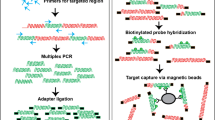Abstract
TERT promoter (TERTp) mutation is the most common mutation in glioblastomas. It creates a putative binding site for Ets/TCF transcription factors, enhancing telomerase expression and activity, whereas the rs2853669 variant disrupts another Ets/TCF binding. We explore here the interaction between these two alterations, tumor genomic profile and the impact on prognosis. The TERTp and rs2853669 statuses were determined and confronted with the outcome and molecular profile, i.e., loss of chromosome 10q, CDKN2A deletion, IDH mutation, EGFR amplification, MGMT promoter methylation. 651 glioblastomas were selected (sex ratio = 1.35, median age 60.4 years, median survival 13.5 months). The TERTp mutation found in 481 patients (74 %) was independent from rs2853669 genotypes. TERTp mutation, but not rs2853669 status, was associated with older age (61.4 vs. 52.8 years). rs2853669 status had no impact on overall survival (OS) either in mutated TERTp or wild-type TERTp. Neither rs2736100 (TERT, 5q15.33) nor rs192011116 (TERC, 3q26.2) status had any impact on survival or showed any association with a TERTp mutation. The TERTp mutation was associated with EGFR amplification chromosome 10q loss, CDKN2A deletion and IDH wt. EGFR amplification was associated with a better outcome in TERTp mutated GBM, and a worse outcome in TERTp WT. This study—the largest analyzing the TERTp mutation and the rs2853669 polymorphism—fails to find any prognostic impact of rs2853669. It confirms the dual prognostic impact of EGFR amplification depending on TERTp status.




Similar content being viewed by others
References
Shete S, Hosking FJ, Robertson LB et al (2009) Genome-wide association study identifies five susceptibility loci for glioma. Nat Genet 41:899–904
Walsh KM, Codd V, Smirnov IV et al (2014) Variants near TERT and TERC influencing telomere length are associated with high-grade glioma risk. Nat Genet 46:731–735
Jones AM, Beggs AD, Carvajal-Carmona L et al (2012) TERC polymorphisms are associated both with susceptibility to colorectal cancer and with longer telomeres. Gut 61:248–254
Killela PJ, Reitman ZJ, Jiao Y et al (2013) TERT promoter mutations occur frequently in gliomas and a subset of tumors derived from cells with low rates of self-renewal. Proc Natl Acad Sci U S A 110:6021
Huang FW, Hodis E, Xu MJ, Kryukov GV, Chin L, Garraway LA (2013) Highly recurrent TERT promoter mutations in human melanoma. Science 339:957–959
Labussière M, Boisselier B, Mokhtari K et al (2014) Combined analysis of TERT, EGFR, and IDH status defines distinct prognostic glioblastoma classes. Neurology 83:1200–1206
Nonoguchi N, Ohta T, Oh JE, Kim YH, Kleihues P, Ohgaki H (2013) TERT promoter mutations in primary and secondary glioblastomas. Acta Neuropathol 126:931–937
Simon M, Hosen I, Gousias K et al (2015) TERT promoter mutations: a novel independent prognostic factor in primary glioblastomas. Neuro Oncol 17:45–52
Arita H, Narita Y, Fukushima S et al (2013) Upregulating mutations in the TERT promoter commonly occur in adult malignant gliomas and are strongly associated with total 1p19q loss. Acta Neuropathol 126:267–276
Killela PJ, Pirozzi CJ, Healy P et al (2014) Mutations in IDH1, IDH2, and in the TERT promoter define clinically distinct subgroups of adult malignant gliomas. Oncotarget 5:1515–1525
Hsu CP, Hsu NY, Lee LW, Ko JL (2006) Ets2 binding site single nucleotide polymorphism at the hTERT gene promoter–effect on telomerase expression and telomere length maintenance in non-small cell lung cancer. Eur J Cancer 42:1466–1474
Rachakonda PS, Hosen I, de Verdier PJ et al (2013) TERT promoter mutations in bladder cancer affect patient survival and disease recurrence through modification by a common polymorphism. Proc Natl Acad Sci U S A 110:17426–17431
Labussière M, Di Stefano AL, Gleize V et al (2014) TERT promoter mutations in gliomas, genetic associations and clinico-pathological correlations. Br J Cancer 111:2024–2032
Park CK, Lee SH, Kim JY et al (2014) Expression level of hTERT is regulated by somatic mutation and common single nucleotide polymorphism at promoter region in glioblastoma. Oncotarget 5:3399–3407
Spiegl-Kreinecker S, Lotsch D, Ghanim B et al (2015) Prognostic quality of activating TERT promoter mutations in glioblastoma: interaction with the rs2853669 polymorphism and patient age at diagnosis. Neuro Oncol 17:1231
Sanson M, Marie Y, Paris S et al (2009) Isocitrate dehydrogenase 1 codon 132 mutation is an important prognostic biomarker in gliomas. J Clin Oncol 27:4150–4154
Hegi ME, Diserens AC, Gorlia T et al (2005) MGMT gene silencing and benefit from temozolomide in glioblastoma. N Engl J Med 352:997–1003
Eckel-Passow JE, Lachance DH, Molinaro AM et al (2015) Glioma Groups Based on 1p/19q, IDH, and TERT Promoter Mutations in Tumors. N Engl J Med 372:2499–2508
Acknowledgments
Work supported by the Fondation ARC. UN was supported by a grant from the University of Pavia and the Association pour la Recherche sur les Tumeurs Cérébrales. The research leading to these results has received funding from the program “investissements d’avenir” ANR-10-IAIHU-06. The authors are indebted to Alexandru Agachi for English Editing.
Author information
Authors and Affiliations
Corresponding author
Ethics declarations
Conflict of interest
None.
Additional information
Umberto Nencha, Amithys Rahimian and Marine Giry have contributed equally to the data presented in this paper.
Electronic supplementary material
Below is the link to the electronic supplementary material.
11060_2015_1999_MOESM1_ESM.pptx
Supplementary material 1 (PPTX 129 kb) Survival curves according to the surgical procedure. Survival curves according to EGFR, chromosome 10q, CDKN2A, MGMTp methylation, IDH and TERTp mutation status. Survival curves according to upfront treatment modality in MGMT methylated and non methylated GBM
Rights and permissions
About this article
Cite this article
Nencha, U., Rahimian, A., Giry, M. et al. TERT promoter mutations and rs2853669 polymorphism: prognostic impact and interactions with common alterations in glioblastomas. J Neurooncol 126, 441–446 (2016). https://doi.org/10.1007/s11060-015-1999-3
Received:
Accepted:
Published:
Issue Date:
DOI: https://doi.org/10.1007/s11060-015-1999-3




